TABLE 14-16
What are the factors that determine the acceleration time (in sec.) from 0 to 60 miles per hour of a car? Data on the following variables for 171 different vehicle models were collected:
Accel Time: Acceleration time in sec.
Cargo Vol: Cargo volume in cu. ft.
HP: Horsepower
MPG: Miles per gallon
SUV: 1 if the vehicle model is an SUV with Coupe as the base when SUV and Sedan are both 0
Sedan: 1 if the vehicle model is a sedan with Coupe as the base when SUV and Sedan are both 0
The regression results using acceleration time as the dependent variable and the remaining variables as the independent variables are presented below.
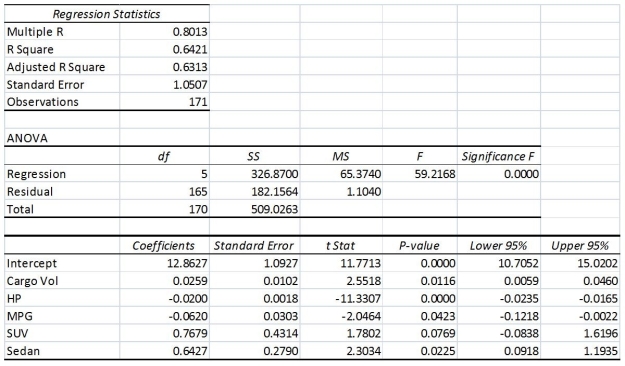
The various residual plots are as shown below.
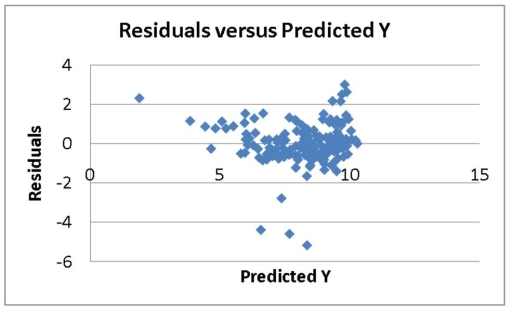
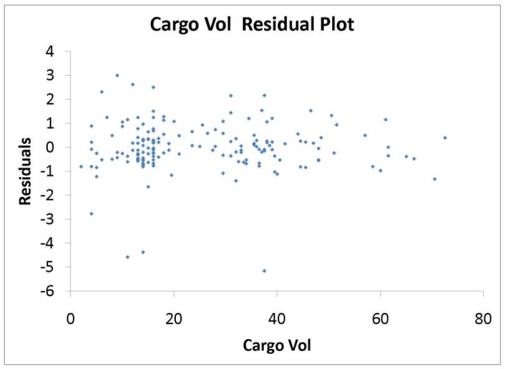
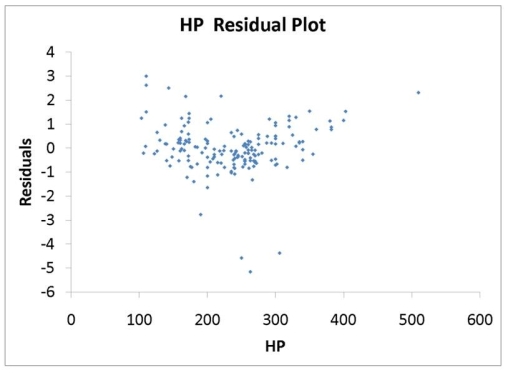
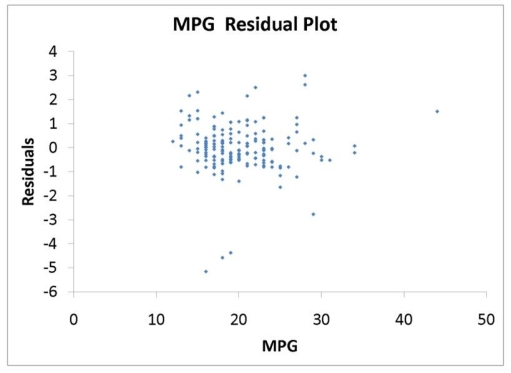
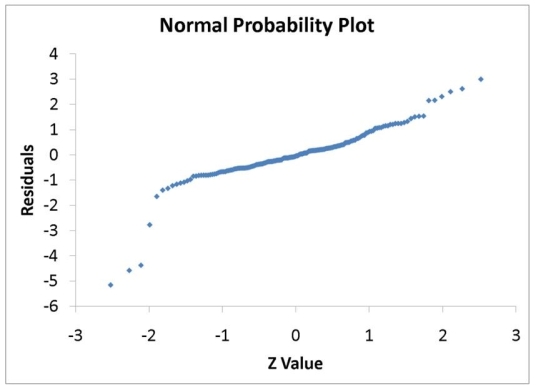

-Referring to 14-16, what is the correct interpretation for the estimated coefficient for Cargo Vol?
Definitions:
Organize
To arrange or structure things in a systematic way for efficiency or clarity.
Explain
To make (an idea, situation, or problem) clear to someone by describing it in more detail or revealing relevant facts.
Predict Data
The process of using statistical methods, algorithms, or models to forecast future outcomes or trends based on historical or current data.
Unconscious Thoughts
Mental processes that occur without conscious awareness, including desires, motivations, and memories, as proposed by Freud.
Q1: Referring to Table 15-4, the "best" model
Q3: Referring to Table 14-3, the p-value for
Q8: Referring to Table 13-10, what are the
Q17: As a project for his business statistics
Q23: Referring to 14-16, what is the p-value
Q99: Referring to Table 12-17, the calculated value
Q162: The method of least squares may be
Q193: Referring to Table 12-16, there is sufficient
Q207: Referring to Table 14-4, which of the
Q300: Referring to 14-16, _ of the variation